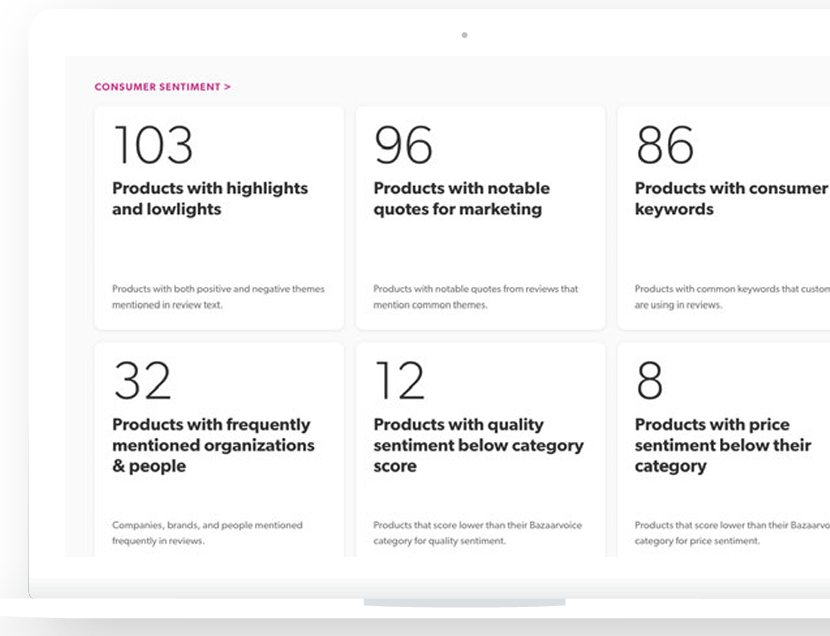April 10, 2023
How to accurately and effectively measure ROI in digital marketing continues to be a big pain point for marketers. According to TINT’s 2023 State of Social and UGC report, only 18% of marketers always track their content performance. But we’re here to fix that.
Chapters:
- What is return on investment (ROI) in digital marketing?
- How to calculate digital marketing ROI
- Why is ROI in digital marketing important?
- 3 ways to improve your ROI
- What other digital marketing metrics you should track
- Understand and improve your ROI
Creating ads, planning social media marketing campaigns, establishing partnerships with influencers — every digital marketing task shares the same ultimate goal: earn the company money.
But, as we said above, only 18% of marketers always track their content performance.
It can be difficult to directly tie the results of digital marketing campaigns to business revenue, but marketers still need a north star to help prioritize their work, prove their value to the company, and know where their efforts (and budgets) are best spent. That’s where ROI in digital marketing comes in.
In this guide, we’ll dive into why it’s important to track ROI in digital marketing and how to do it, as well as key metrics to track based on your brand’s goals.
What is return on investment (ROI) in digital marketing?
ROI in digital marketing is the measure of how much revenue was made or lost in relation to how much you spent on a campaign. Determining your digital marketing ROI will help inform future budget decisions, so you get more bang for your buck.
Say, for example, you executed an ad campaign on Instagram for a new skincare product that cost X number of dollars. If your brand sees a spike in sales for that product after the campaign is launched that brings in 50% more money than the campaign cost, that’s a positive ROI.
A positive ROI in digital marketing will vary depending on your industry. But, a general rule of thumb is that a good ratio is around 5:1.
Let’s take ourselves, Bazaarvoice, as an example. A recent Forrester Total Economic Impact™ of Bazaarvoice revealed that our clients have the potential to deliver a 400% ROI.
This means that in this situation, you’d have a ratio of 4:1. Or $4 earned for every $1 spent.
How to calculate digital marketing ROI
ROI is the percentage of the initial investment in your marketing campaign and how much it increased or decreased based on revenue. To measure your digital marketing ROI, divide profit by cost and multiply the result by 100 to get the ROI percentage.
As an equation, the ROI formula looks like this:
ROI = (net profit / total cost) × 100
After plugging in your numbers, if your ROI equation yields a positive figure, it means your total revenue exceeded the total cost, and you’re in the black. If the figure is negative, you’re in the red, and costs exceed returns.
Obviously, landing in the black is preferable because it means you’ve made a profit.
The ROI equation seems simple enough. However, your ROI calculation likely won’t ever be completely accurate unless you’re able to nail the cost of the project or campaign down to the dollar. That’s tricky even under the best circumstances because you’re not only factoring in ad spend and materials. You also need to think about factors like salaries, software that was used, etc.
Why is ROI in digital marketing important?
Measuring your digital marketing ROI helps you allocate your marketing budget effectively and efficiently, and achieving a positive ROI proves you’re “delivering the goods.”
Whether your ROI is positive or negative, it shows you where you’ll need to make changes. If a campaign costs more than it earns, you know something needs to be adjusted, like the platform, audience, or messaging. For example, if you’ve had continual success with videos on TikTok showing your product in action that resulted in conversions, you obviously want to keep investing in that channel.
Determining your ROI shows C-level execs at your company the value of strong marketing. As noted in TINT’s report, “marketers who track metrics that align with business objectives, create processes and ROI reports that show the true impact of social and keep the big picture in mind will ultimately increase their chances of generating buy-in and support from leadership teams.”
Digital marketing ROI also helps you determine what success looks like for your team and your brand at large. One major benefit of digital marketing is that if something doesn’t work, you’re not stuck. You can pivot and experiment to see whether another platform or content format will improve ROI, increasing your chances of success.
3 ways to improve your ROI
Digital marketing success isn’t guaranteed, but zeroing in on certain areas of focus helps you reach the right audience and set realistic goals.
1. Leverage user-generated content
User-generated content (UGC) can boost your digital marketing ROI because people trust other people’s recommendations more than they trust brands’ advertising. UGC is authentic content created by real people as opposed to messaging coming directly from your brand. It’s present in the form of customer reviews, influencer partnerships, or mentions of your brand or product in social media, a podcast, or a blog post.
The value of UGC can’t be overstated — 40% of shoppers around the world say UGC makes them more likely to make a purchase. That’s a huge chunk of consumers you don’t want to miss out on.
Natural cosmetics brand Fresh wanted to increase sales and brand awareness and build trust. The company partnered with Bazaarvoice to launch a sweepstakes campaign encouraging customers to leave a review of their favorite product from the Rose collection. Those who participated were entered for a chance to win a $100 eGift card.

The campaign resulted in 217 reviews just in the first week — a 145% increase from normal rates. Fresh captured and distributed authentic, organic feedback and saw an overall revenue impact of $1.48 million, all through the power of UGC.
2. Monitor consumer insights
Consumer insights give you a peek into the minds of your customers, allowing you to meet their wants and needs and improve your ROI as a result. When customers feel seen and heard, you can boost sales as well as customer satisfaction and retention.
KidKraft, a company that creates toys and furniture to enrich childhood, wanted to enhance its existing line of products and improve the messaging of its marketing efforts to better appeal to parents. So the company harnessed the power of customer insights with an Insights & Reports tool.
Insights & Reports uses artificial intelligence (AI), machine learning (ML), and natural language processing (NLP) to gather, organize, and analyze consumer insights. These insights come in the form of meaningful data and actionable recommendations to strengthen marketing efforts.

With the tool, KidKraft was able to use insights from customer reviews to understand how customers were using their products. From there, the company made improvements to its products to better cater to its audience and meet their demands. This led to an increase in sales, better products, and improved messaging.
3. Set ROI goals for future campaigns
Unbridled ambition can be a great thing, but to achieve a positive ROI, set realistic and achievable goals at the start of your digital marketing campaigns. This doesn’t mean you can’t dream big — it just means you need to set yourself up for success by aiming for something attainable (and hopefully, you surpass the goals you set!).
Use results from past campaigns to inform goals for current and future campaigns similar in nature. This isn’t an exact science, but it can help with your planning so you’re not going in blind.
For example, say your brand brings back a fan-favorite perfume each year for a limited time in the spring. And each year, you run several Facebook ads that see a lot of engagement and result in a huge uptick in sales. Knowing the typical profit from this campaign from years past can help you set a budget and potentially expand the campaign to other platforms because you’re confident the Facebook ads alone will bring in a significant ROI.
Your goals can be related to other metrics and key performance indicators (KPIs) that also affect and impact ROI (more on these metrics in the next section).
What other digital marketing metrics you should track
ROI is the ultimate metric to tell you whether or not your marketing strategy impacted your company’s bottom line. But digital marketing ROI on its own doesn’t paint the whole picture. Even if a campaign doesn’t immediately produce a significant ROI, it can still yield positive marketing results and bring your audience into the fold for future sales and conversions.
These metrics and KPIs will help you measure your digital marketing strategy’s success in addition to ROI.
Average order value
Average order value (AOV) tells you how much is being spent, on average, per customer order. A good marketing campaign could result in more conversions, but an increase in AOV could mean a boost in ROI because customers are spending more money per order.
To calculate your company’s AOV, divide the total revenue by the number of orders. It’s really that simple.
AOV = total revenue / number of orders placed
For example, let’s say your online sales last month were $80,000 from a total of 2,500 orders. That means the AOV last month was $32.
There’s many ways to creatively increase AOV. Start by creating an order minimum to reach “free shipping” status. According to BigCommerce’s consumer survey, 77% of respondents said they’d abandoned a purchase because there weren’t adequate shipping options.
You can also bundle products to improve AOV, implement a customer loyalty program, cross-sell and upsell when appropriate, and offer a stellar customer support experience.
Click-through rate
Click-through rate (CTR) is a ratio that gauges how well your ads are performing and shows you how often the people who see your ad, sponsored post, or product listing actually click it.
To determine CTR, you take the number of clicks that the ad receives and divide it by how many times your ad is shown, also known as impressions.
CTR = number of clicks / number of impressions
For example, if you had 80 clicks and 400 impressions, then your CTR would be 20%.
If you want to improve your CTR, make sure the headline and copy are search engine optimized (SEO). Keyword research can help you determine which keywords to use in your online and social media ads to show up on the search engine results page (SERP) when your customers are searching for organic keywords. Landing your brand on the radar of potential customers helps get more clicks because you’re meeting the criteria of what they’re searching for.
Including a call to action (CTA) is another way to improve CTR because it’s like an invitation prompting your audience to click the ad and learn more. Images also can increase CTR depending on the channel, and A/B tests can help determine which images and copy would work best on what platform.
A/B testing involves splitting your marketing audience to test campaign variations and figure out which option performs best.
Conversion rate
Conversion rate is the percentage of people who converted out of all the people who visited your site and is a good way to determine the efficacy of your marketing content. A conversion refers to whatever action you’re looking to measure, whether it’s a purchase from a new customer, clicking a CTA, or signing up for your newsletter.
To calculate your conversion rate, take whatever your number of conversions is and divide it by the number of visitors.
Conversion rate = number of conversions / number of visitors
Say your e-commerce site received 3,000 visitors in January, and there were 600 sales. That means your conversion rate in January was 20%.
You can improve conversion rates by making it clear to the user what value they’ll get out of performing the action you want them to perform. In other words, make sure your unique value proposition is clear to anyone who visits your website or sees an ad or social media post. Highlight customer reviews and testimonials to drive home the fact that other real people have used you and recommend you.
Take premium cycling gear company Le Col, for example. Le Col wanted to reach new customers by using UGC and leaning on loyalty from expert cyclists. The company worked with Bazaarvoice to promote the brand’s authentic content and improve its product pages. The result was a 125% conversion rate increase.
Cost per acquisition
Cost per acquisition (CPA) is an important financial metric used to measure the total cost of acquiring a new customer via a specific campaign or marketing channel.
Your average CPA is calculated by dividing the total cost of the campaign on a specific channel to acquire customers by the number of new customers that were acquired from the same channel or campaign.
CPA = total cost of campaign / number of new customers from the campaign
So, if you spent $3,000 on Instagram ads and acquired 25 new customers, your CPA for that campaign is $120.
Improving CPA actually means reducing it, and you can do that in a variety of ways. Start by ensuring the landing page your ad redirects to is optimized to make a good impression. Optimize your landing page by ensuring the most important information — including the CTA and any form you’d like users to fill out — is near the top of the page. The content on your landing page should be engaging and clear, so people know what you’re offering them in exchange for performing a desired action.
Having your company’s contact information visible on the landing page also adds legitimacy for users checking you out for the first time.
Cost per lead
Cost per lead (CPL) is the amount of money spent generating new leads from your current marketing campaign. CPL tells you whether your marketing efforts are reaching enough of the right people and filling up your pipeline.
To calculate CPL, take the cost of generating leads and divide it by the total number of leads acquired.
CPL = cost of lead generation / total number of leads acquired
Like CPA, improving CPL means reducing the amount of marketing costs needed to acquire potential customers. To increase the number of leads and the likelihood of customers seeing your ad and clicking on it, focus on improving the quality and content of your advertising.
One way to do this is to link your Google Analytics and Google Ads accounts to gain a bird’s-eye view of how much traffic on your website is coming from your ads. If you’re not seeing significant page views from your ads, adjust your approach — test different keywords, copy, and CTAs to figure out which messaging resonates with potential customers and gets them through the door.
Customer lifetime value
Customer lifetime value (CLV) is the measure of the total amount of income your business can expect to bring in from a customer for the entirety of that customer’s relationship with your brand. A customer’s annual value and the average length of their relationship with you indicate how well your marketing activities are working.
The equation to calculate CLV looks like this:
CLV = customer’s annual value × average customer lifespan
Say a customer purchases mascara each month, spending $15 each time, and does this for 12 years. To figure out their CLV, you’d take 12 × 15 × 12, meaning their CLV was $2,160.
Knowing your CLV provides many benefits, including improving customer retention, encouraging repeat sales (and higher volume sales), and increasing your digital marketing ROI overall. CLV gives you an understanding of which customers should take priority with marketing efforts because you know who’s more likely to make additional or frequent purchases.
If you’re looking to boost your company’s CLV, focus on your customer feedback. The more you know what they’re looking for, the more you can improve your marketing and products to entice them to keep buying from you. And take opportunities to upsell and cross-sell to existing customers.
For example, a simple way to cross-sell is to send emails to existing customers showing them related products to complement their original purchase.
Return on ad spend
Return on ad spend (ROAS) is an important metric that measures the amount of revenue earned for each dollar spent on paid digital marketing efforts. ROAS is very similar to ROI, but ROAS specifically speaks to the ROI of paid digital marketing.
To determine your ROAS, divide the revenue attributed to your ad campaign by the cost of the campaign.
ROAS = revenue of campaign / cost of campaign
So, if you spent $2,000 on ads as part of a social media campaign, and your revenue from the ads was $5,000, your ROAS ratio is 5:2 or 250%.
ROAS can be increased by trimming the fat of your ad cost. The easiest way to reduce ad costs is to implement hyper-targeted ads so the right eyes (aka people who are likely to be interested) are seeing your ads, resulting in more leads and sales.
Understand and improve your ROI with Bazaarvoice
Bazaarvoice is your ally in improving digital marketing ROI through our suite of products that help you leverage UGC across the entire consumer journey.
Our marketing ROI calculator, for example, helps you understand the impact UGC can have on ROI in digital marketing and your retail sales.
It combines the potential SEO impact, sales increase, syndication to retail value, and more to give you a clear picture of your total projected increase in annual revenue. Give it a try for yourself.










